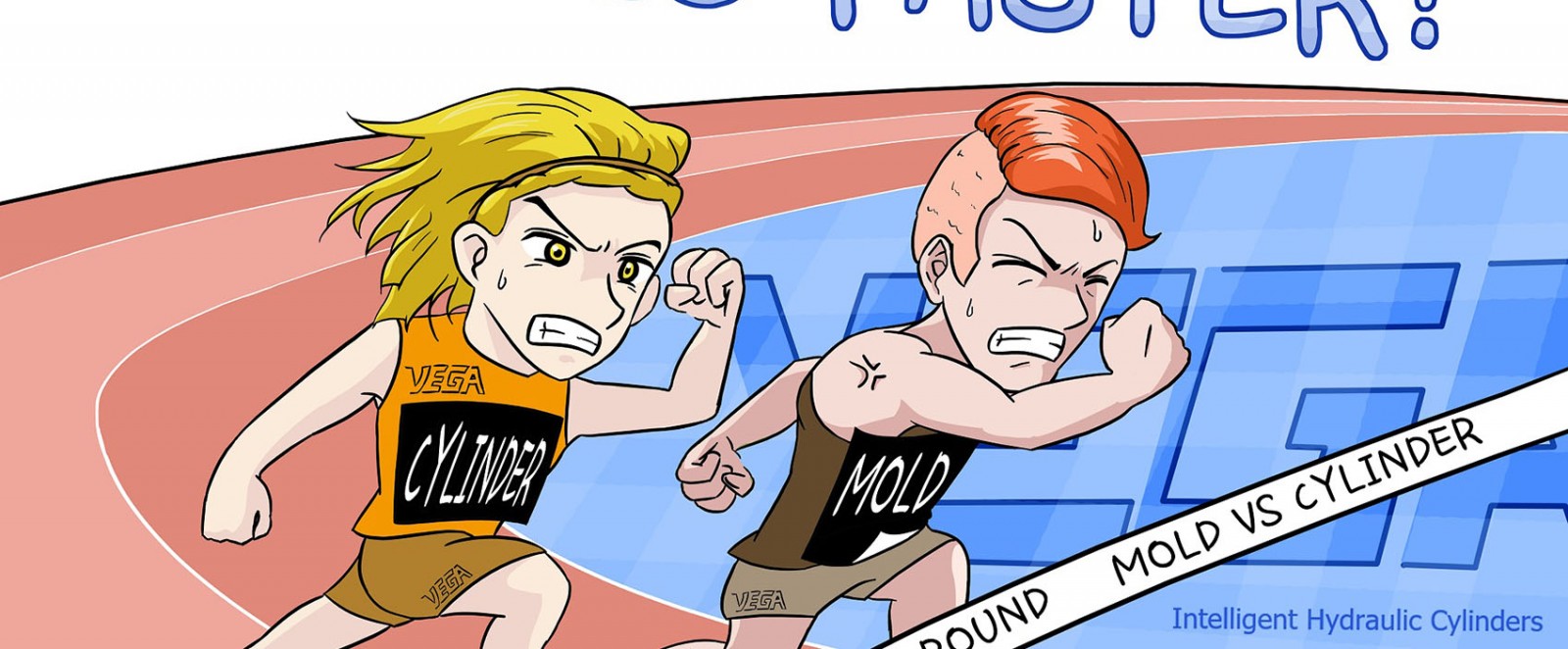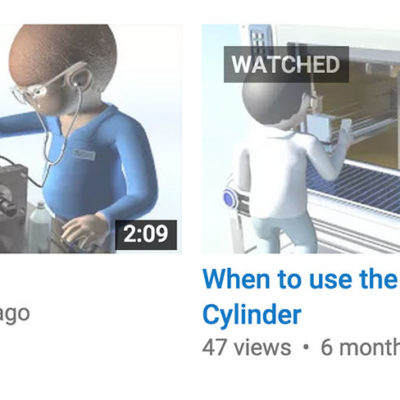In injection mold cycles, hydraulic cylinders usually start operating during opening and closing phases. Therefore, it’s quite common for mold users to “squeeze” operations to the minimum, in order to save time and, consequently, money. However, it also causes a greater stress to be placed on most components, increasing the need for a more frequent maintenance. This calls for the right balance to be found.
In the following section, we report further information concerning speed and hydraulic cylinders, making special reference to cylinders manufactured by Vega. The following chart shows the maximum catalog speed of all Vega cylinders. Keep also in mind that many cylinder manufacturers and textbooks on hydraulics suggest that the speed of non-cushioned units should not exceed 0.1 m/s.
|
Max Speed |
||
|
without Cushioning |
with Cushioning |
|
|
V210CR |
0,1 m/s |
0,7 m/s |
|
V250CE |
0,05 m/s |
N/A |
|
V220CC |
0,1 m/s |
N/A |
|
V450CM |
0,1 m/s |
N/A |
|
V260CF |
0,1 m/s |
N/A |
Calculating the Speed
Speed values in our catalog vary according to delivery. Granted, adjusting the delivery of every single cylinder would be an impossible task, and no one could that! Actually, the real speed of each cylinder depends on many factors related to the hydraulic circuit. That makes predicting the actual speed of a cylinder very hard to do.
Therefore, we can say that catalog speed values are ‘good practice values’ of hydraulics, but in real life they will usually be overcome. It’s just impossible to say how much.
Moreover, many of our competitors’ block cylinders have larger oil supply holes, and this led some of our customers to wonder why Vega didn’t implement them as well. Actually, smaller holes increase oil speed in that spot, generating a drop of pressure. So it’s a kind of “built-in” safe device, in order to avoid excessive speeds.
An example will help make things clearer. Imagine having a cylinder speed of 0.1 m/s and an oil supply port with a diameter 1/20 of the cylinder bore. In such a case, oil speed in the port will be 400 (20^2) times higher, reaching 40 m/s. Applying the formula v^2/(2g), we have a piezometric height of 80 m, which amounts to almost 8 bars. If the cylinder speed is around 0.2 m/s, the pressure loss will be around 32 bars. True, this calculation is actually very far from being extremely precise, but it gives a general idea of the situation. This means that a speed of 0.4 m/s is quite close to the possible maximum, with a pressure drop close to 130 bars.
If the oil supply port is 1/10 of the cylinder diameter, pressure drop at a speed of 0.4 m/s will be around 8 bars, and 32 bars at 0.8 m/s. This means that a non-cushioned cylinder would be breaking the limits even of a cushioned cylinder!
But what could happen by exceeding speed limits? And why do other cylinders have higher limits?
Keep the Limits!
Cylinder installation is vital when it comes to speed. Upon request, Vega can supply special cylinders with larger supply holes. However, Vega usually prefers to remain on the safe side and provide smaller supply holes. Higher speeds can be attained with proper installation, by connecting small masses and by providing end-of-stroke stops before the piston hits the cylinder head or cap. Also, if we are ready to cope with shorter lifecycles, we could also decide to over-stress the cylinder. Even when large oil supply holes are provided—such as with our tie-rod cylinders—our customers usually ask for a cushioning system. Why is that?
Generally speaking, without cushioning overloads will result in breaking. Pistons and rods might break, as well as the body of “light-duty” V250 cylinders. However, Vega cylinders are made to be resistant, and can usually operate at a higher speed than the one reported in our catalog.
Usually, all these problems arise only when something went wrong with installation or during operations. The only exception concerns the V260 series. This type of cylinder needs to reach both end-of-stroke positions, both in and out. It also offer very large oil supply holes. Excessively high speeds could cause over-stress on locking-sector openings and on internal components when the rod gets back. Therefore, speed control is highly advisable when using these cylinders’
However, Vega general policy is to opt for cushioning, and new cylinders offer it with minimal extra costs, along with larger oil ports.
In doing this, we remain faithful to our traditional strategy—offering high speeds and safe operations for a very long time!




